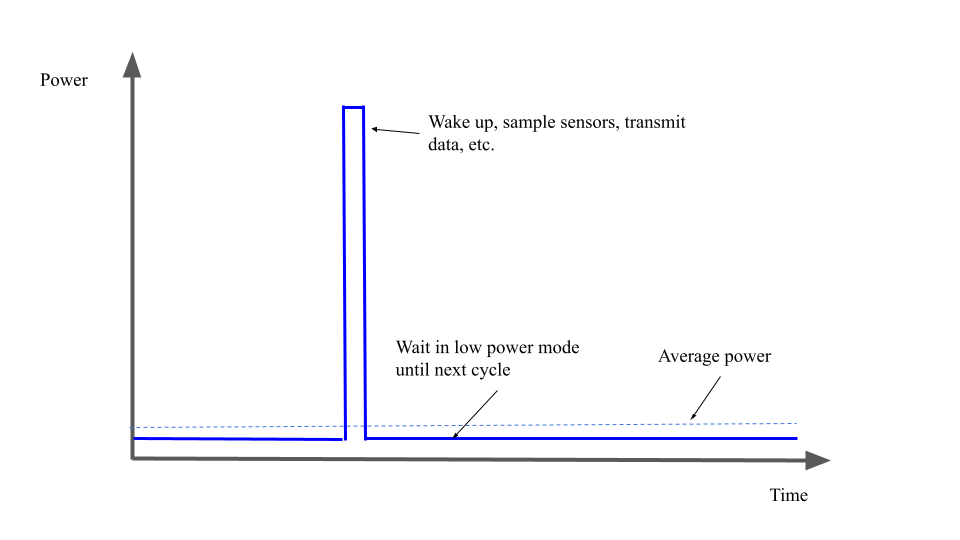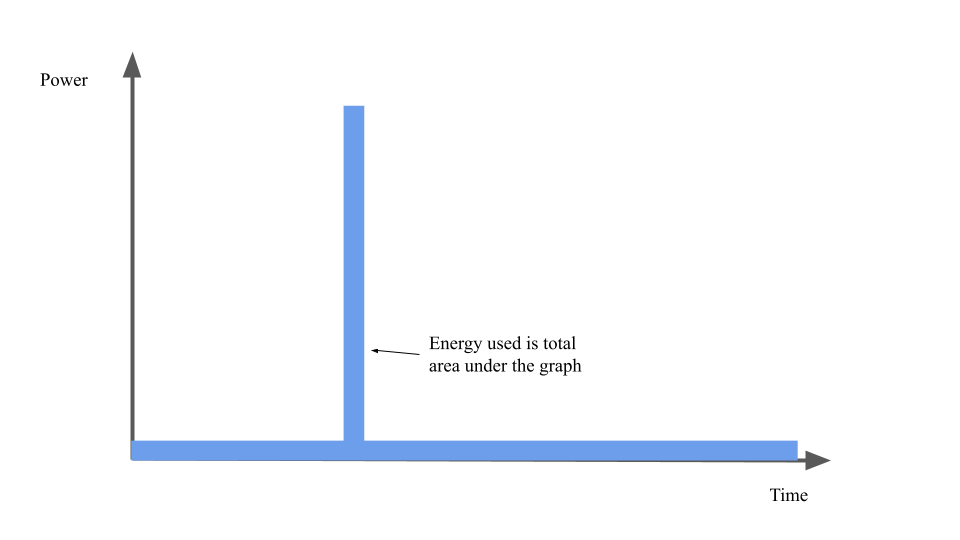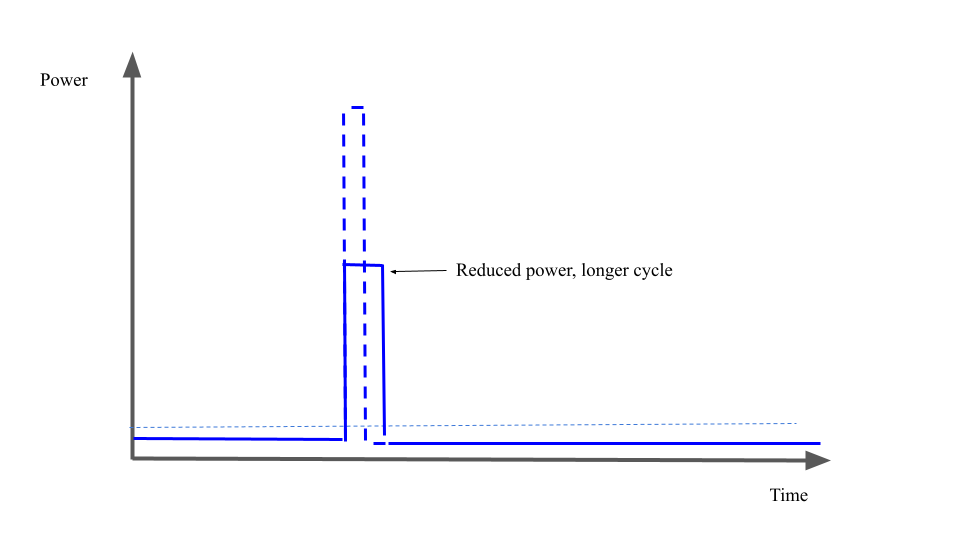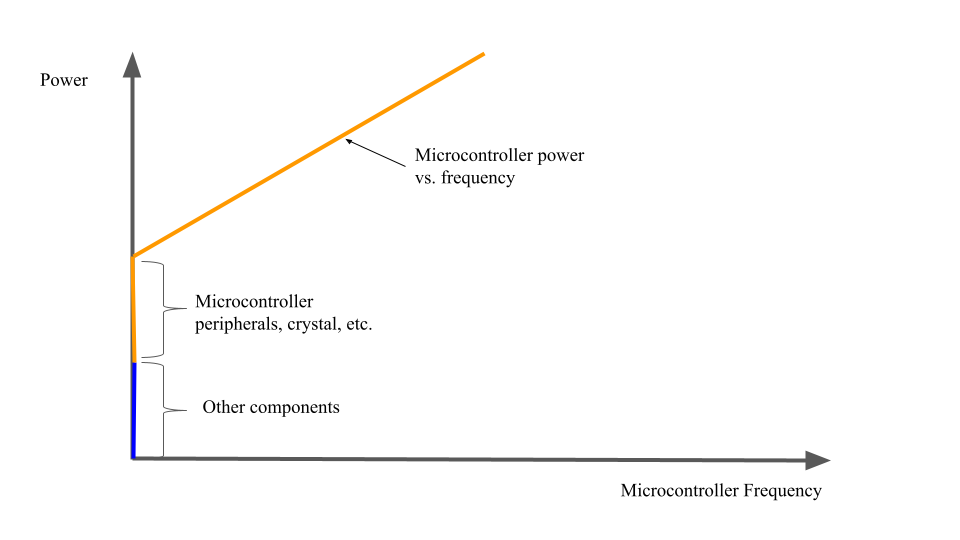In many designs, “ultra-low power” is a bit of a misnomer. More accurately, most designs are ultra-low average power. While these devices may also have low active power consumption, the real power savings are achieved by operating most of the time in a lower power state. The figure below shows a nominal plot of the power used in an ultra-low power device. The device periodically wakes up, performs tasks such as sampling data from sensors, transmitting it over a wireless network, and then re-enters its low power mode as quickly as possible. If the duty cycle is high enough, this can result in average power consumption that is very close to the power consumption in its low power mode.

While “power” and “energy” are sometimes colloquially used as interchangeable, engineers know they are not. Energy used is equal to power used over time, and therefore the total energy used throughout this example is equal to the area under the graph. This is shown in the figure below.

While this plot is a simple way to show the data, it is misleading. It appears that the ultra-low power mode consumes roughly 10% of the power needed in active mode. In reality, the gap between active and sleep modes is often far wider. For example, the Microchip ATSAMD21 (used on many Arduino compatible development boards) requires roughly 4-7mA in active mode while running at 48MHz. In standby mode, it requires roughly 1,000X less power. This gap is even wider for the wireless-enabled ESP32. With Wi-Fi connected, the ESP32 can easily require 150mA or more, and can drop down ~15,000X to 10uA in deep sleep! Neither of these components are really ultra-low power microcontrollers either; those that are can have significantly lower-power low power modes.
With this gap in mind, it is useful to consider at a high level how a designer might reduce the average power of their design. Consider a simple design that consists solely of an ATSAMD21. Every 10 seconds, it wakes up and does some processing, If this processing requires 100ms, it will be in low power mode for 99% of the time. This results in an average current of ~54uA. Due to the enormous power difference in the modes, >92% of the total energy is used during the 1% of time spent in active mode! Therefore, the developer’s focus should usually be on reducing the energy used while in active mode. Clearly, this can be done in two ways: the power used or the time spent can be reduced. Often, these can be related. Most microcontrollers can operate at various frequencies. They will typically consume more power at higher frequencies, but of course will then be slower. The image below shows the potential power profile change when lowering the active mode frequency significantly.

Although reducing the operating frequency can reduce the power used by the microcontroller, this is typically only an effective change if the time spent in active mode is not CPU limited. For example, if the active time required is due to the sample time of some sensor, the CPU may simply be waiting for data for most of the active mode section. In this case, reducing the CPU frequency can reduce overall energy use. The image below shows why. Even with the microcontroller CPU frequency set very low, there is a base power consumption by other components and microcontroller peripherals that is unaffected. By lowering the frequency, this base power consumption is consumed over a longer time. Of course, in reality many microcontrollers have numerous internal clocks running at configurable frequencies. The summary is that the microcontroller should typically perform its active mode operation as quickly as possible, then re-enter low power mode.

Discussions
Become a Hackaday.io Member
Create an account to leave a comment. Already have an account? Log In.